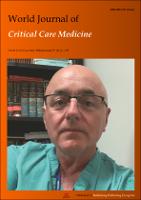Precision medicine in sepsis and septic shock: From omics to clinical tools
Author
Date
2022-01-09Permanent link
https://hdl.handle.net/11351/8040DOI
10.5492/wjccm.v11.i1.1
ISSN
2220-3141
PMID
35433311
Abstract
Sepsis is a heterogeneous disease with variable clinical course and several clinical phenotypes. As it is associated with an increased risk of death, patients with this condition are candidates for receipt of a very well-structured and protocolized treatment. All patients should receive the fundamental pillars of sepsis management, which are infection control, initial resuscitation, and multiorgan support. However, specific subgroups of patients may benefit from a personalized approach with interventions targeted towards specific pathophysiological mechanisms. Herein, we will review the framework for identifying subpopulations of patients with sepsis, septic shock, and multiorgan dysfunction who may benefit from specific therapies. Some of these approaches are still in the early stages of research, while others are already in routine use in clinical practice, but together will help in the effective generation and safe implementation of precision medicine in sepsis.
Keywords
Endotype; Organ dysfunction; SepsisBibliographic citation
Ruiz-Rodriguez JC, Plata-Menchaca EP, Chiscano-Camón L, Ruiz-Sanmartin A, Pérez-Carrasco M, Palmada C, et al. Precision medicine in sepsis and septic shock: From omics to clinical tools. World J Crit care Med. 2022 Jan 9;11(1):1-21.
Audience
Professionals
This item appears in following collections
- HVH - Articles científics [4476]
- VHIR - Articles científics [1751]
The following license files are associated with this item:

 Private area
Private area Contact Us
Contact Us








